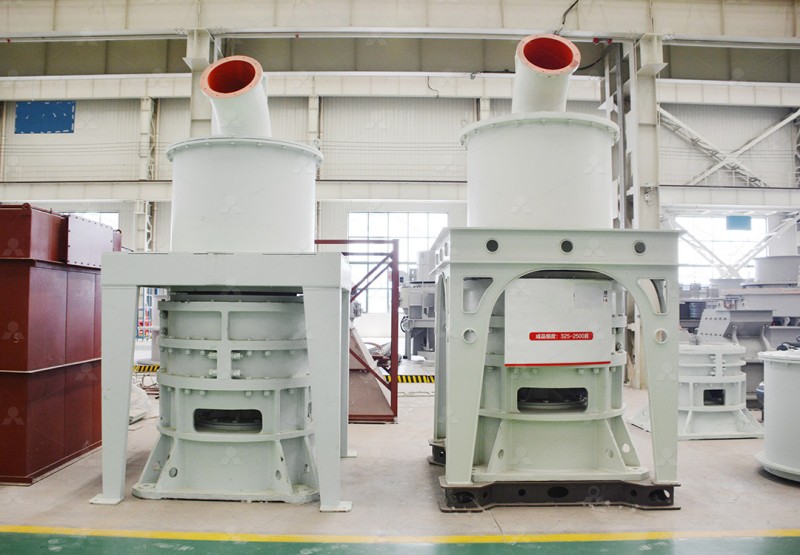Medium Speed Grinding Mill for Artificial Stone Processing
Medium Speed Grinding Mill for Artificial Stone Processing
The artificial stone industry has experienced remarkable growth in recent years, driven by advancements in manufacturing technology and increasing demand for consistent, high-quality materials. Unlike natural stone, artificial stone offers superior uniformity in color and texture, making it ideal for architectural and design applications. However, achieving the precise particle size distribution required for optimal binding and surface finish presents significant challenges for manufacturers.

Traditional grinding methods often fall short when processing engineered stone materials. The composite nature of these materials – typically consisting of quartz, resin, pigments, and other additives – demands equipment capable of handling varying hardness levels while maintaining consistent output quality. This is where medium speed grinding technology demonstrates its distinct advantages.
The Critical Role of Particle Size Control
In artificial stone manufacturing, particle size distribution directly impacts both the aesthetic qualities and mechanical properties of the final product. Finer particles contribute to smoother surfaces and more vibrant coloration, while proper gradation ensures optimal resin absorption and structural integrity. The ideal grinding solution must therefore offer precise control over fineness while maintaining high throughput rates.
Our MW Ultrafine Grinding Mill represents a significant advancement in this field. With an input size capability of 0-20 mm and capacity ranging from 0.5-25 tph, this machine is specifically engineered for customers requiring ultra-fine powder production. The MW series achieves adjustable fineness between 325-2500 meshes, making it perfectly suited for the exacting requirements of artificial stone formulations.
Technical Innovations for Enhanced Performance
What sets modern medium speed grinding mills apart are the engineering solutions addressing common production challenges. The MW Ultrafine Grinding Mill incorporates several proprietary technologies that deliver tangible benefits for artificial stone processors:
- Higher Yielding, Lower Energy Consumption: Newly designed grinding curves of grinding roller and grinding ring enhance grinding efficiency by 40% compared to jet grinding mills, with system energy consumption reduced to just 30% of conventional systems.
- Advanced Powder Selection: The cage-type powder selector adopts German technologies, increasing precision of powder separation and enabling product fineness adjustment between 325-2500 meshes with screening rates achieving d97≤5μm.
- Maintenance-Optimized Design: The absence of rolling bearings and screws in the grinding chamber eliminates concerns about bearing damage or loose screws causing machine failure.

For operations requiring different specifications, our LUM Ultrafine Vertical Grinding Mill offers complementary capabilities with input size of 0-10 mm and capacity of 5-18 tph. This model features unique roller shell and lining plate grinding curves that generate material layers more easily, enabling high rates of finished products through single-pass powder milling.
Environmental Considerations in Modern Grinding
Contemporary manufacturing must address environmental concerns without compromising productivity. The MW Ultrafine Grinding Mill incorporates efficient pulse dust collection and muffler systems that minimize dust and noise pollution. The entire production system operates according to national environmental protection standards, with no dust pollution generated during operation.
This environmental focus extends to energy efficiency. The multi-head powder separating technology in our LUM grinding mill reduces energy consumption by 30%-50% compared to conventional mills, while digitalized processing ensures higher precision across all components.

Operational Reliability and Support
Beyond technical specifications, operational reliability determines long-term profitability. Our grinding mills are designed with maintenance accessibility in mind. The reversible structure of the LUM Ultrafine Vertical Grinding Mill allows operators to easily move grinding rollers out of the body for inspection and replacement, minimizing downtime.
Furthermore, we provide comprehensive technical support and original spare parts to ensure worry-free operation. Our production and sales coverage means we take responsibility for every machine we produce, standing behind our equipment with responsive customer service.
Future Trends in Artificial Stone Processing
The artificial stone industry continues to evolve, with trends pointing toward increasingly sophisticated material compositions and finer finished products. Grinding technology must keep pace with these developments, offering greater precision, efficiency, and flexibility. Our ongoing research and development ensures that our grinding mills incorporate the latest advancements to meet these emerging requirements.
Frequently Asked Questions
What makes medium speed grinding mills suitable for artificial stone processing?
Medium speed grinding mills offer the optimal balance between processing speed and particle control. They provide sufficient energy for effective size reduction while allowing precise control over final particle distribution, which is critical for artificial stone quality and appearance.
How does the MW Ultrafine Grinding Mill handle materials of varying hardness?
The MW series incorporates specially designed grinding curves and pressure adjustment systems that automatically adapt to material hardness variations. This ensures consistent output quality even when processing composite materials with different hardness characteristics.
What environmental benefits do these grinding systems offer?
Our grinding mills feature integrated dust collection systems that capture 99.9% of particulate matter, along with noise reduction technology that minimizes acoustic pollution. Energy-efficient designs also reduce power consumption by 30-50% compared to conventional mills.
How does the adjustable fineness feature work?
Through advanced cage-type powder selectors and PLC control systems, operators can precisely adjust fineness parameters between 325-2500 meshes. This allows manufacturers to tailor particle size distribution to specific artificial stone formulations and customer requirements.
What maintenance requirements should operators expect?
Our grinding mills are designed for minimal maintenance. The absence of rolling bearings in the grinding chamber and accessible component design reduce routine maintenance needs. When service is required, our reversible structures and external lubrication points enable quick access without extensive disassembly.
